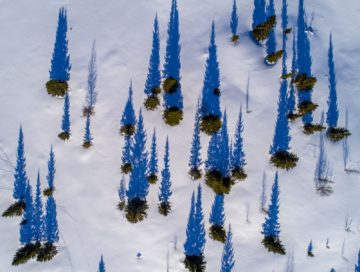Fred Pearce in Science:
 These are strange times for the Indigenous Nenets reindeer herders of northern Siberia. In their lands on the shores of the Arctic Ocean, bare tundra is thawing, bushes are sprouting, and willows that a generation ago struggled to reach knee height now grow 3 meters tall, hiding the reindeer. Surveys show the Nenets autonomous district, an area the size of Florida, now has four times as many trees as official inventories recorded in the 1980s. In some places the trees are advancing along a wide front, but in other places the gains are patchier, says forest ecologist Dmitry Schepaschenko of the International Institute for Applied Systems Analysis in Austria, who has mapped the greening of the Siberian tundra. “A few trees appear here and there, and some shrublike trees become higher.”
These are strange times for the Indigenous Nenets reindeer herders of northern Siberia. In their lands on the shores of the Arctic Ocean, bare tundra is thawing, bushes are sprouting, and willows that a generation ago struggled to reach knee height now grow 3 meters tall, hiding the reindeer. Surveys show the Nenets autonomous district, an area the size of Florida, now has four times as many trees as official inventories recorded in the 1980s. In some places the trees are advancing along a wide front, but in other places the gains are patchier, says forest ecologist Dmitry Schepaschenko of the International Institute for Applied Systems Analysis in Austria, who has mapped the greening of the Siberian tundra. “A few trees appear here and there, and some shrublike trees become higher.”
All around the Arctic Circle, trees are invading as the climate warms. In Norway, birch and pine are marching poleward, eclipsing the tundra. In Alaska, spruce are taking over from moss and lichen. Globally, recent research indicates forests are expanding along two-thirds of Earth’s 12,000-kilometer-long northern tree line—the point where forests give way to tundra—while receding along just 1% (see map, below).
More here.
